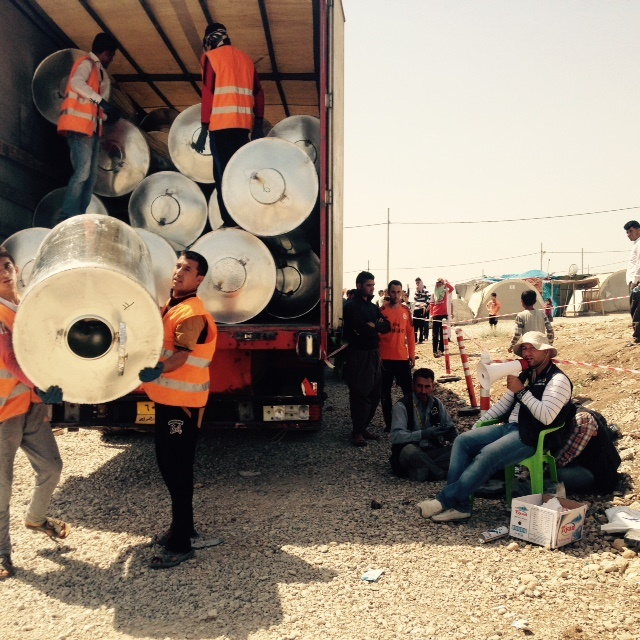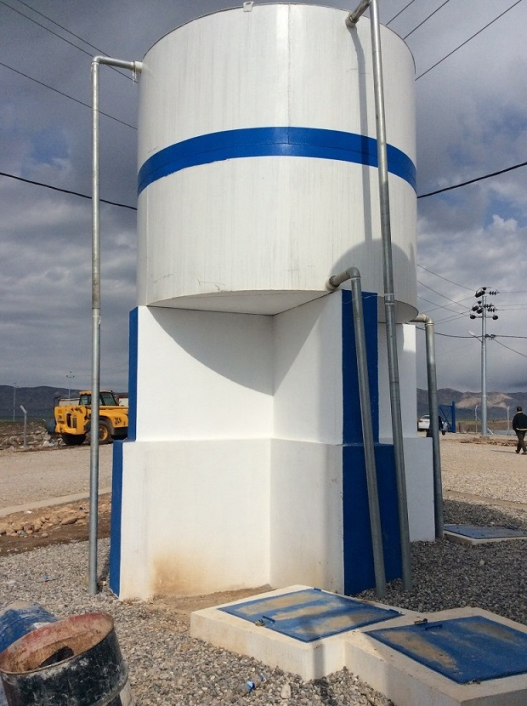By Miyako Hamasaka | PR Manager
In Kurdistan, the hot weather had been continued. During the day, the temperature reaches over 35 degrees centigrade with scorching sunlight. People living in the camp rarely walk outside after the middle of the day.
Water consumption has increased with the raising temperature. In the area where the camp locates, the ground water has significantly decreased, which has resulted in that water level of wells in the camp is getting lower. In order to figure out the current situation and consider the possible solution, JEN installed equipment to measure water quantity delivered by wells.
When the supplier of this equipment visited our office, the staff in Finance Section seemed to know the company president even though it was the first time for her to meet the supplier. I asked her why she knows him. “Everyone knows him because of his honesty” she said. It is like an old Japanese story, but it was only recently existed.
True to its reputation, this supplier’s performance was quite good and it was nice to work with them.Coordinating with such local suppliers, JEN continues to work for stable water supply in the camp.
Household water tank distribution
Water consumption has increased day by day in July with the rise in the temperature. Because of that, water scarcity was reported by some residents in some specific areas in the camp. Though the sufficient quantity of water to cover the camp population is being discharged from the well, water is not enough in some areas. The main reason was too much water consumption by residents in the camp.
Water discharged from the wells is saved in the reservoirs, which is located 2 meters high from the ground (see the bottom page of a picture), and then water is distributed to each household using water pressure. When the residents use water continuously, water cannot be discharged quickly enough to be saved in the reservoir. As a result, enough water cannot reach some of the households in some of the areas due to insufficient water pressure.
JEN’s engineers, camp managements and well keepers discussed several times and tried some means to resolve this matter. Finally, we reached one solution to open only one valve out of 4 valves to restrict the water way and increase the water pressure in a particular area. However, this method would cut off water supply in other areas for a certain period of time. In order to alleviate this restriction, JEN decided to distribute household water tanks so that residents can save water in the water tank during the time they receive water. Once the water supply is cut off, they can use water from the water tank.
JEN aims to increase awareness on water saving, as water consumption can be tracked by saving water in the water tank and using water from water tanks by the residents themselves.We also will continue to improve the living environment of internally displaced persons’ (IDPs) camp together with camp managements such as water supply.
Project reports on GlobalGiving are posted directly to globalgiving.org by Project Leaders as they are completed, generally every 3-4 months. To protect the integrity of these documents, GlobalGiving does not alter them; therefore you may find some language or formatting issues.
If you donate to this project or have donated to this project, you can receive an email when this project posts a report. You can also subscribe for reports without donating.

